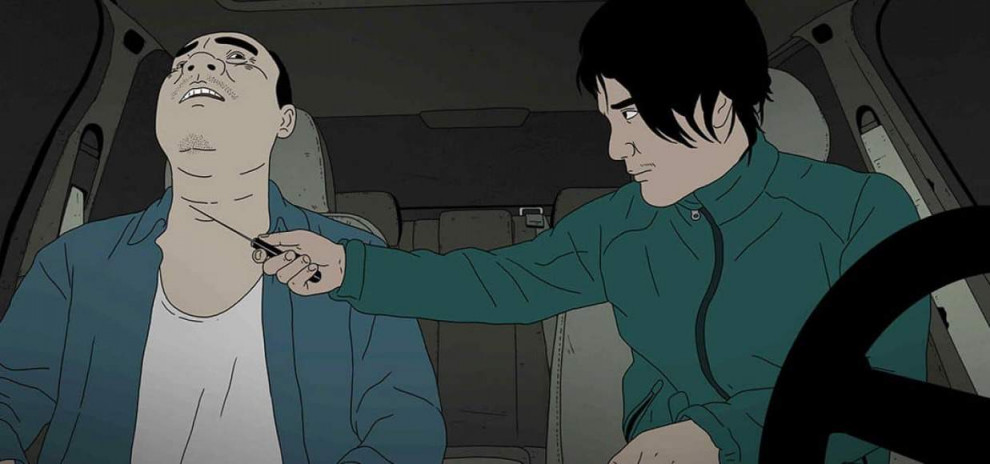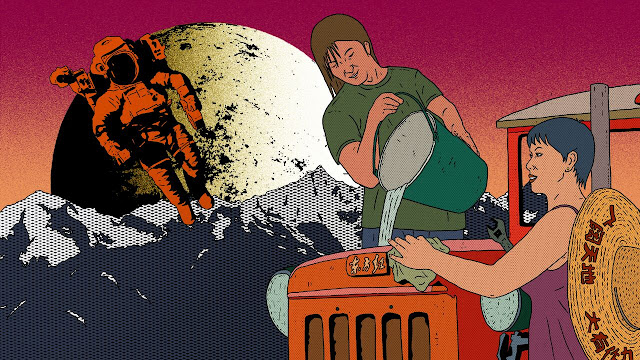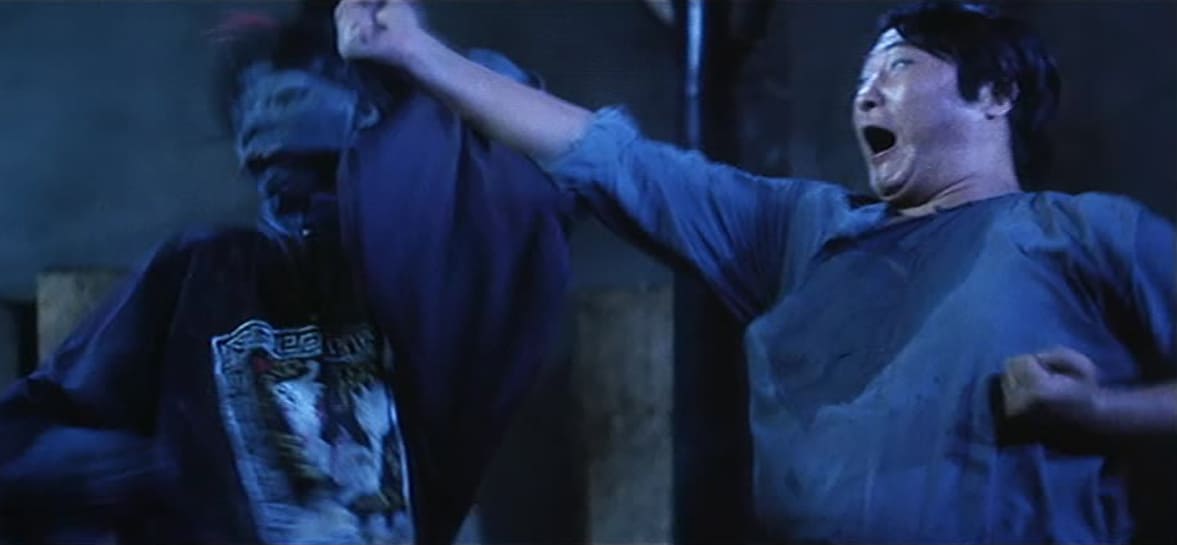2017 was the first year I took a thorough look at the animation industry of other Asian countries, apart Japan. The general opinion I have after watching a number of samples is that, although in terms of visuals, anime is still the top choice, regarding context, meaningfulness, and addressing adults instead of teenagers, Japanese could learn a thing or two from their S. Korean and Chinese colleagues. Chinese “Have A Nice Day”, is a testament to the fact.
“Have A Nice Day” opens theatrically in New York on Friday, January 26th, with a national release to follow
The somewhat Tarantino-esque script revolves around a bag with blood-red colored money inside it, and the impact it has on a number of misfits living in an unknown, decaying town in China. Xiao Zhang is a driver who has robbed a member of the local mob, and is planning to use the money to fund a plastic surgery his fiancée demands on having in Korea. The leader of the mob, Uncle Liu, is on the process of torturing a childhood friend, when he is informed of the incident, and sends Skinny, a butcher who occasionally works as a hired killer, to find who stole the money. However, Xiao Zhang has already been robbed by a supposed inventor of X-ray glasses, who runs away with his girlfriend. When he is electrocuted trying to disable a road camera, his girlfriend takes the money and leaves. A hostess, who happens to be the sister of Xiao Zhang's girlfriend, learns of the act and with the help of her boyfriend, decides to rob Xiao Zhang.
Evidently, the script is kind of complicated, particularly through the presence of a plethora of characters that intermingle in the just 77 minutes of the duration of the animation. However, Liu Jian uses the concept of the stolen bag, which can be said is the only main protagonist, as a point of focus, with almost every action revolving around it, and in that fashion manages to collect the many different stories.
Through this script, he makes a number of comments, most of which revolve around the fact that the majority of the characters wish to escape, either from their own reality or even the country. The last couple referred is a distinct sample of this trait, as they want to escape to Shangri-La, a wish which is presented in a surrealistic and rather colorful musical interlude. Among the many episodes of the film, Liu Jian manages to incorporate a number of samples of “pop wisdom”, that begins with the merits of lunatics, continues to Zuckerberg, BIll Gates and Donald Trump, and finishes with concept of freedom, which in this setting, is directly connected with consumerism. Occasionally though, some of these comments look somewhat out of place, as if the director wanted to include them no matter what, even despite the flow of the story.
All of the characters in the film are despicable, as their only drive seems to be greed, in a setting that makes Xiao Zhang's initial act particularly idiotic, especially when one considers his reasons. In that fashion, the rather violent ending, seems to be the perfect conclusion to all the stories.
The animation and the drawing in the film are somewhat peculiar, at least for me, since I am quite used to the style of anime. In that fashion, the actual movement on the screen is minimal, apart from the few action scenes, and the director seems to focus on the background, which features some impressive samples of pop art in dark tones. This tactic seems to demand from the viewer to focus on the dialogues rather than what is depicted on the screen, and definitely succeeds on that aspect. Occasionally though, this tendency gave me the impression that the production is poor, which could be the case after all, and somewhat amateurish. On the other hand, the stills are quite good, and the general style of both the animation and the drawing fit the general setting of decay quite good.
“Have A Nice Day” has its faults, particularly in the technical department, but is a rather meaningful spectacle, as it presents a rather pointy critique towards the contemporary Chinese society.

















